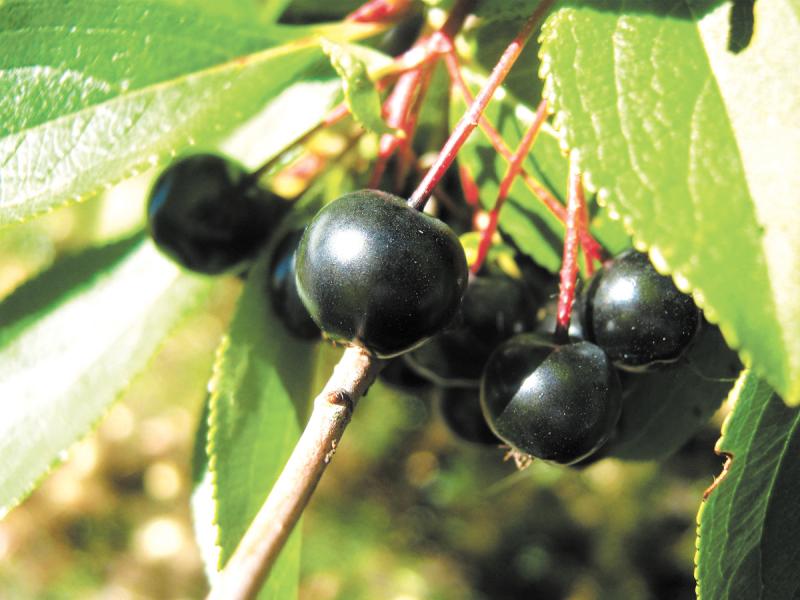“That's for the birds” is a shortened form of a more off-color saying that describes birds pecking at manure piles looking for seeds. But a garden for the birds need not include manure piles, and it can be especially helpful and beautiful in winter.
Wild birds need a diet filled with high-energy sugars and fats to stay warm. You can plant a buffet of winter berry plants that not only feeds winter birds, but also, these plants will attract pollinating insects to your garden when they bloom next spring.
Berries are high-calorie foods full of sugars, fats and antioxidants. Try planting the vigorous native Virginia Creeper (Parthenocissus quinquefolia). This very fast-growing vine will quickly climb fences, walls and trellises, providing quick cover for wild things.
It has a looser, more open growth habit than its relative, Boston Ivy. In the fall, the deep green leaves change to a brilliant scarlet-orange. You can use Virginia Creeper as a ground cover, where it will quickly blanket a slope or grounds. Its glossy, purple-black berries are an important winter food for birds and wildlife. The berries contain oxalic acid, so they are moderately toxic to humans, although Native Americans used the plant as medicine.
Virginia Creeper, with five leaves per stem, is often mistaken for Poison Ivy (Toxicodendron radicans), which has groups of three leaves. A childhood rhyme can guide you: “Leaves of three, let it be; leaves of five, let it thrive.”
Another item on the winter bird buffet is Red Chokeberry (Aronia arbutifolia), whose berries attract cedar waxwings, thrushes, northern flickers, grouse and thrashers. It is called “chokeberry” because the berries are very bitter if eaten fresh, but sweetened and cooked, they make fine jellies and preserves.
Red chokeberries are multi-stemmed shrubs good for planting in masses along woodlands, in borders, or any naturalized spot. They thrive in full sun or partial shade, and do well grown next to a pond or wetlands. They are slow-growing, eventually reaching six feet tall and wide.
The real show is in the fall, especially when several are planted together. Because it spreads by suckering, chokeberry is great for erosion control. Red chokeberries can form large colonies, providing a real winter food stop for birds. Try mixing in companion plants such as snowberry (Symphoricarpos albus), redbud trees (Cercis canadensis) and dogwood (Cornus florida).
Another winter berry plant for birds is the Arrowwood Viburnum, so called because Native Americans cut the branches to make arrows. The plants are tall, from six feet up to 15 feet high. These flowering shrubs bloom with clusters of white flowers in spring, followed by stunning red fall foliage. The four-inch white flowers have raised stamens, giving them a playful, fuzzy look.
Arrowwood viburnum can grow in almost any soil, even acidic soil. Although they thrive in full sun, they also do well in light shade and even full shade. They are hardy in USDA zones 2 to 8.
Besides feeding the winter birds, Arrowood Viburnum attracts many types of butterflies. The azure butterfly and several species of moth feed on the leaves. Because they grow into dense thickets, the shrubs give year-round protection to songbirds.
Plant native berries for the birds, and you will be rewarded with easy-care shrubs and a colorful cast of songbirds every winter. They are easy plantings even if you are, shall we say, bird-brained.























































